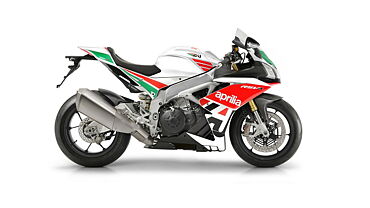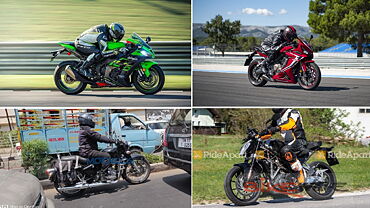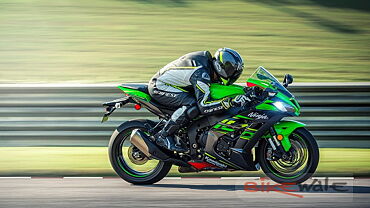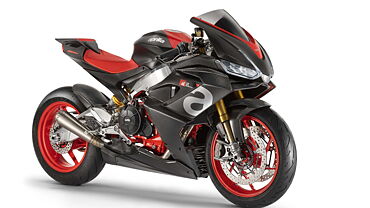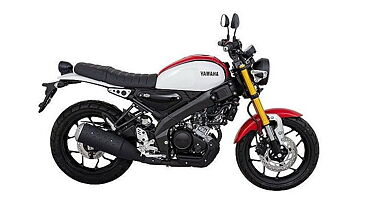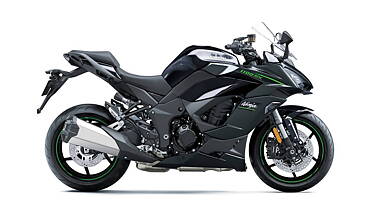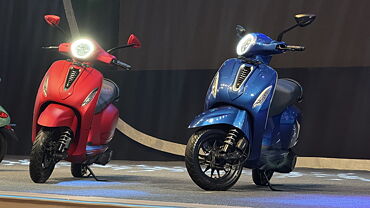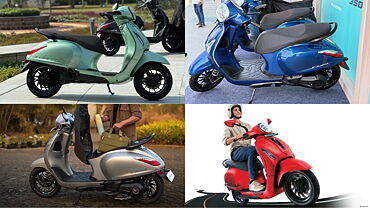Introduction

Dave Moss is a man on a mission. He firmly believes that setting up a motorcycle correctly can save lives. And so his mission is to be able to save a life a day by helping motorcyclists set up their motorcycles correctly; suspension in particular.
He was in India recently at the behest of Atomic MotorSports. Atomic MotorSports, for those not in the know, is an outfit for motorcyclists, by motorcyclists. And their sole aim is to improve the motorcycle riding / racing culture in the country. And it intends to do that by bringing in the right know-how, whether it be about riding, motorcycle setup, or customisation.
Back to Dave Moss, and while he was here, he took sometime to talk to BikeWale about the 5 golden rules every motorcyclist must follow, not just to be able to ride faster, but also stay upright and alive... for longer.
Rule 1: Get the motorcycle to fit you

According to Moss, if one buys an expensive bicycle, it takes 90 minutes at least to get it to fit the rider bio-mechanically. It’s the same when you buy a motorcycle. But, most of us ignore that. We just get on and begin riding.
So, one of the first things one must do when buying a superbike, or any modern motorcycle for that matter, is to check how the bike fits the rider. Check if the handlebar is in the right place; do the levers fit the hand; do the knees fit the tank properly; and whether the controls for the feet are easy to access and use. And, to do that it’s important to sit on as many motorcycles as possible before buying a bike.

But, of course, that’s not how we purchase bikes. We buy them for their looks, their creed, their horsepower, and the list goes on and on. But, Moss recommends that no matter what motorcycle you want to buy, it still makes sense to sit on as many bikes as possible to see what’s comfortable. Then, one can try and apply those changes on the bike one is buying. Ideally, that should happen before taking delivery of the motorcycle.
And, it’s important to make these changes before taking the motorcycle out of the gate, says Dave, because otherwise, you will just manage pain versus being comfortable. And if you are managing pain, you are far more prone to reacting and not responding, while riding. So, find a bike that fits you, or be willing to invest in the capital that’s required to make them fit you.
Rule 2: Learn how to use a tape measure for sag

Dave Moss loves tape measures. You will never find him without one. And he believes, as motorcyclists, we should all learn to use them. It helps in knowing how much the bike compresses under one’s weight. It tells the rider if he or she is in fact within the weight range for the stock suspension setting.
So, rule number two is – look at the tape measure, use the tape measure to measure sag, and see if you are in the 30-40mm range with the settings on the showroom floor. If you are not, you need to change the springs before you can take the delivery of the bike. But, of course, that doesn’t happen. And that’s one of the main reasons why people love their bikes one minute, and don’t the next.

If you are not in the weight range – the 30-40mm range – the springs on the motorcycle will be too stiff for you. So, you will have to change them. If you are too heavy, again, you will need to change them. And you will only know this when you measure it. For which, you obviously need a tape measure.
Moss says, if the springs are too stiff for your weight, as soon as you ride the bike, every imperfection on the road is going to make the front wheel point in the wrong direction. You are going to be in a wrestling match that you won’t win because at some point your arms are going to be so exhausted, you will just give up. The same applies for one’s spine, by the way. It will get hammered, no matter if one is too heavy or too light for the stock springs. And that, as Moss says, will only lead you to manage pain instead of enjoying the ride.
Rule 3: Know how and if you can manage oil flow

The third rule is to manage oil flow in the suspension. Dave says, this is important because suspension manages a motorcycle’s behavior. And oil, be it for brakes or suspension, reacts differently depending on both age and temperature.
It’s important, therefore, that one must take the pain of knowing what their motorcycle has, and what it doesn’t. For instance, does it come with adjustment for compression or rebound? Does it have high speed compression or low speed compression? Does it only get rebound or preload?
As far as adjustments go, the first step is to set the minimum suspension preload for the rider’s weight. Once that spring tension is set, one needs to adjust the rebound damping. This must be done to compensate for the oil age and the temperature to set the flow.
Now, if we have no rebound control, no hydraulic control – mostly seen on bikes that haven’t had their fork or shock oils changed in over 5,000-6,000km – the bike will take the rider on a wild bull ride over poor surfaces. Dave says, this is because one can’t control rebound. Also, because of the imperfections in the road and their inconsistency, the bike quite literally goes completely epileptic in terms of suspension.

To keep this in check, one needs a control mechanism, says Moss. So, if you don’t have preload and rebound you are in a world of trouble, he adds. But, generally, at least on bikes where speed and power can affect suspension significantly, there’s always some adjustment for the latter. And in modern bikes, you will also find compression adjustment for better honing the working of the suspension.
So, according to Moss, it’s important to know what one has. Is it traditional suspension or the latest, greatest technology? And, then one must temper the riding depending on what one has, and how much one is willing to work with it to find the right setting.
Rule 4: Know your (tyre) pressures

Next up, are tyres. Specifically, the pressures we choose to run in them. Dave Moss says, for 30 years, we have settled for a figure that reads 36:42 in psi for the front and rear tyre pressures, respectively. This, even though tyre technology has changed dramatically since.
What’s important to note that as riders, we all have different skill levels. And, we all ride differently. So, the same tyre pressures for all just cannot be applied. The tyre pressures must also change depending on what type of motorcycle one rides, and what sort of tyres one is running – a hard touring tyre or a super soft hypersport tyre. According to Moss, the general rule of thumb should be to start at 42:42 psi front and rear. And then, start bringing it down two psi at a time till you get to 36:36. ]

He adds, during this process of elimination, so to speak, it’s important to focus on which of these pressures did multiple things. These include absorbing the bumps well; keeping the tyres’ structure intact to aid easy side to side transitions; didn’t get the handlebar to shake under braking or acceleration, courtesy the front getting squished or the rear getting squashed excessively. The air pressure does help achieve this and can now be set as the baseline.
Now, if you want longer tyre life, you can bump up the pressure and avoid getting a flat spot. This will, of course, come at the cost of outright grip. Tyres pressures can also lead to uneven wear. And, if that happens, the uneven wear will determine your lean angle and your turn-in rate. For instance, you might be able to lean more and more progressively on one side, but might suddenly flop on the other, thanks to that flat spot.
So when your tyre goes out of round, your riding experience is defined by the tyre.
Rule 5: Regular maintenance and upkeep

Finally, the most obvious thing – regular maintenance and upkeep. But, not just of your motorcycle in general like an engine oil change or chain slack adjustment. It must also include suspension and brakes.
The suspension – especially for high-end bikes – needs attention for it keep performing at its best, says Dave Moss. Now, on our roads we can’t do 250kmph for many miles like in Germany for instance. But, according to Moss, we might be running slower speeds in India, but the road surfaces are way more erratic and unpredictable. So, the velocity and movement on the shock or fork on an Indian urban road, is almost as much as on a dirt bike.
Needless to say, there’s quite a bit of suspension wear even at these slow speeds because of the constant repetition of movement, and the suspension finding it almost impossible to settle down. Moss says, it’s important therefore that one must service the front fork very 6,000km and the rear shock every 6000-8000km on the high-end bikes in India.

This will ensure the suspension performance is consistent. The longer the service intervals between suspension oil changes, the more the suspension performance changes from hot to cold. And, therefore, the higher the risk for the rider.
According to Dave, the cold thick oil in the fork or the shock in the morning is going to make the bumps seem huge. So much so that it might deflect the tyre to a point that one might low side. But, when the oil is steaming hot into your ride, you will find the bike bouncing all over the place because the setting you have can’t control the oil flow.
He suggests that one must change the oil regularly – 6,000km on the outside, but preferably every 3,000km, to make the suspension performance more consistent even when moving from cold to hot. It’s the same for brake oil. The sooner you change the brake oil, the more consistent the braking performance.
Final words

In order to be able to apply these golden rules, Dave Moss suggests detaching oneself from the bike. He agrees that it’s great to talk bikes and riding techniques and how a corner was handled and what performance parts one’s bike runs. But, it’s also equally important to get away from all that chatter, and think about the sensible changes one must institute to make the bike fit better. It’s also important to test them out, tweak them, and then enjoy one’s ride for a lot longer.
Photography by Kaustubh Gandhi
Gallery
1/28
5 Golden Rules For Motorcyclists
Double Tap to Zoom
























